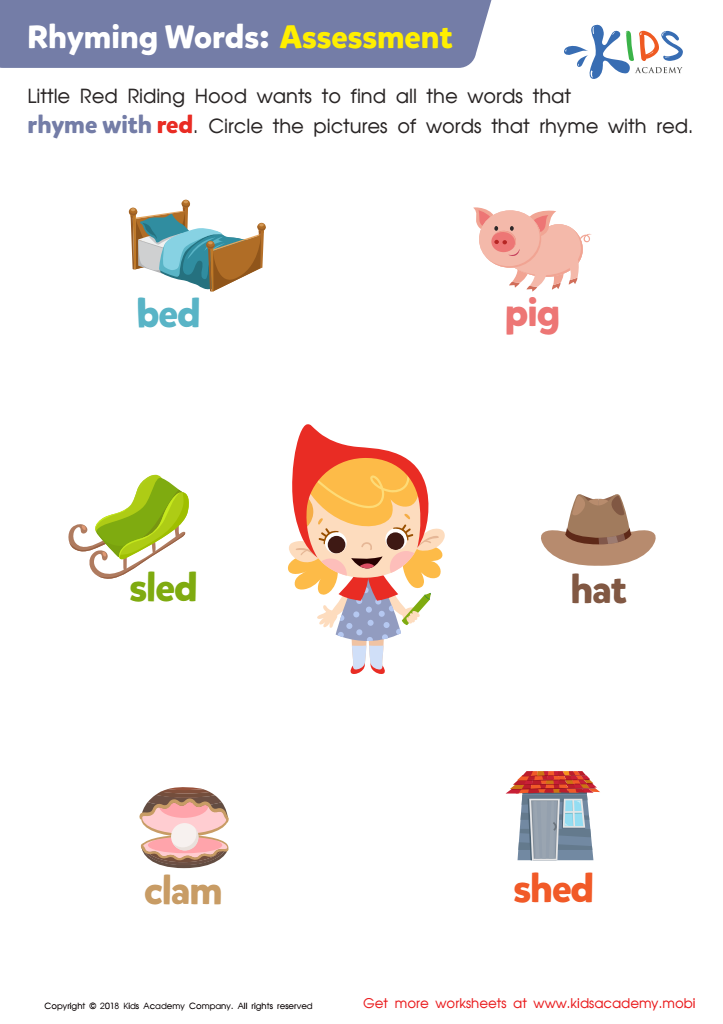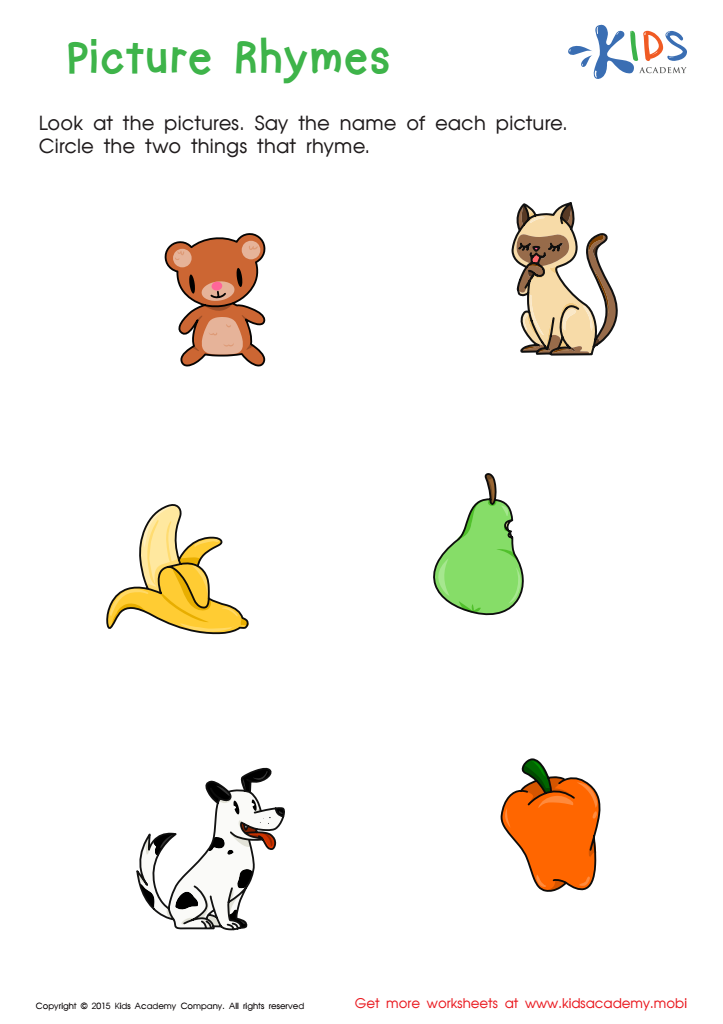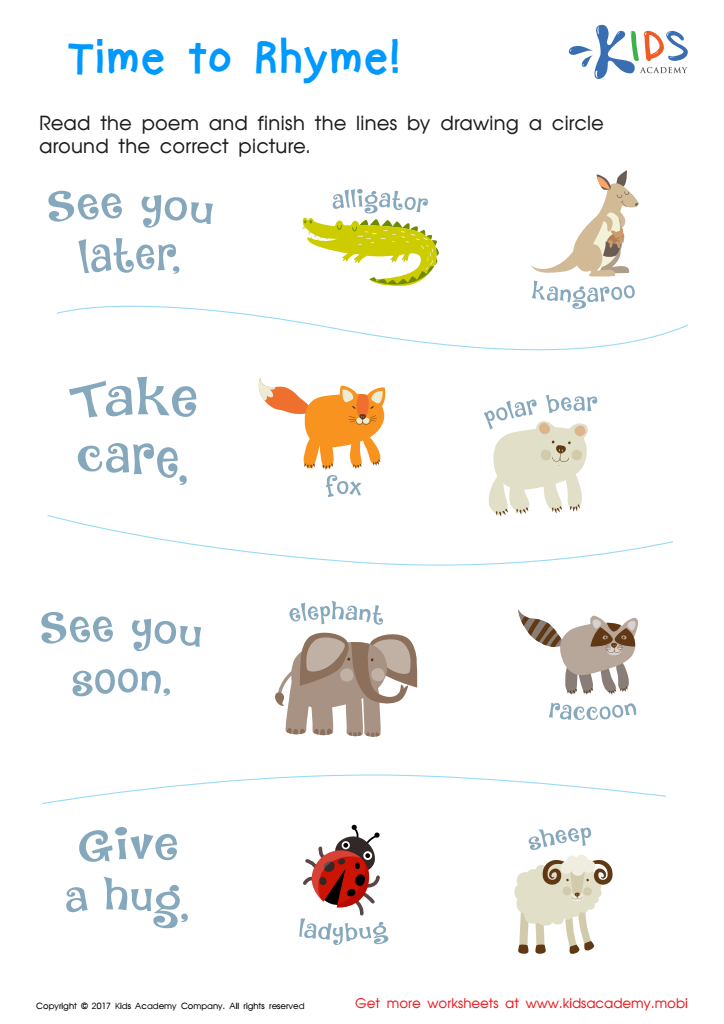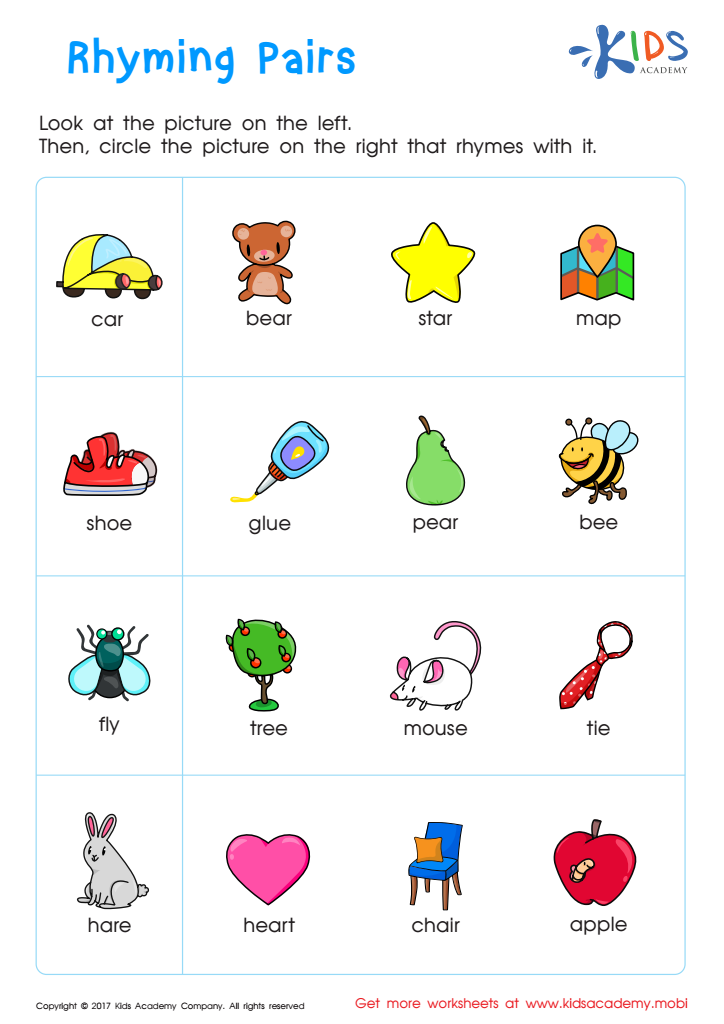Normal Rhyming Worksheets for Ages 3-4
5 filtered results
-
From - To
Introducing our captivating Normal Rhyming worksheets, specially designed for Ages 3-4! These engaging worksheets are perfect for young learners, making the journey into the world of language both fun and educational. Through a series of carefully crafted rhyming exercises, your child will not only enhance their phonemic awareness but will also develop a love for the musicality of words. Ideal for preschoolers, our Normal Rhyming worksheets for Ages 3-4 are your go-to resource for fostering early literacy skills, ensuring a solid foundation for your child's reading journey. Dive into the delightful world of rhymes and watch your little one's language skills flourish!


Rhyming Words: Assessment Worksheet


Rhyming Words Rhyming Worksheet


First Words: Picture Rhymes Worksheet


Time to Rhyme Rhyming Worksheet
Normal Rhyming worksheets for Ages 3-4 are an invaluable tool in the early development of children's literacy skills. At this pivotal age, children are like sponges, absorbing information rapidly and learning new skills through playful interaction. Rhyming, an essential phonological awareness skill, lays the foundation for reading and spelling success by helping children understand how language works.
Using Normal Rhyming worksheets tailored for Ages 3-4, young learners are introduced to the concept of rhyming in an engaging and age-appropriate manner. These worksheets are designed to stimulate children's interest in sounds, enabling them to distinguish between different phonetic patterns and similarities in word endings. This is crucial for developing their ability to predict and decode new words, a skill that significantly impacts reading proficiency.
Furthermore, rhyming exercises enhance children's vocabulary and creativity. By exploring rhymes, they are exposed to a variety of words, which enriches their language and encourages them to experiment with new word combinations and ideas. The playful aspect of rhyming also keeps children motivated and eager to learn, making the learning process both enjoyable and effective.
In summary, Normal Rhyming worksheets for Ages 3-4 are not only a fun educational resource but also a fundamental building block in children's literacy development, setting them on the path to becoming confident and proficient readers.

 Assign to My Students
Assign to My Students


















